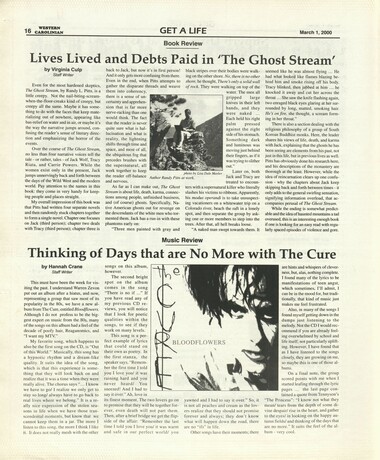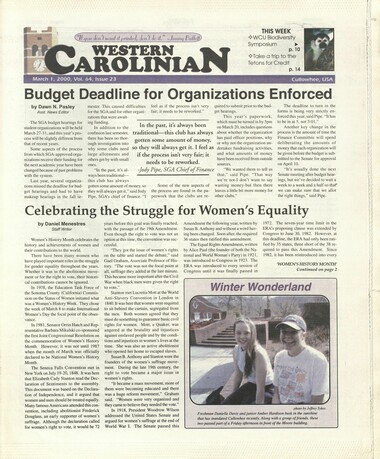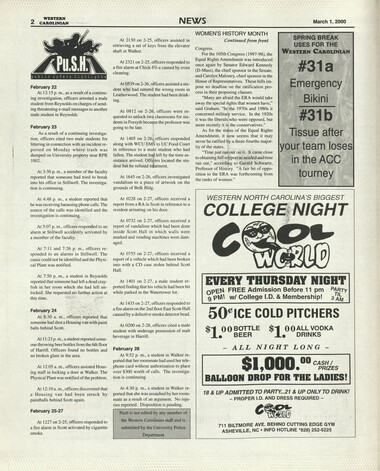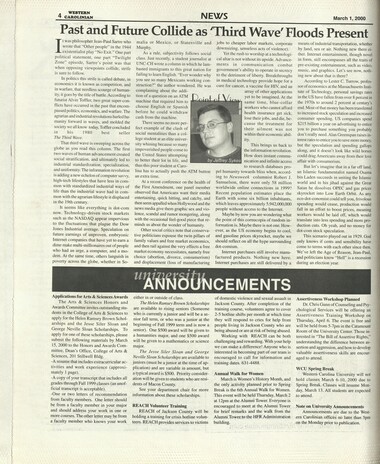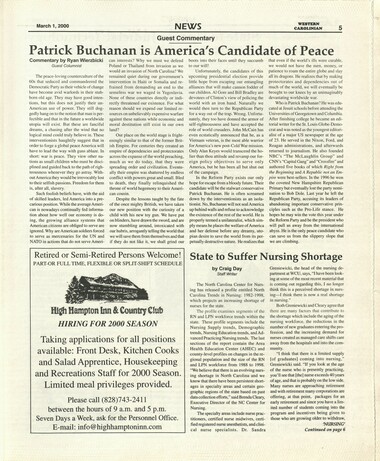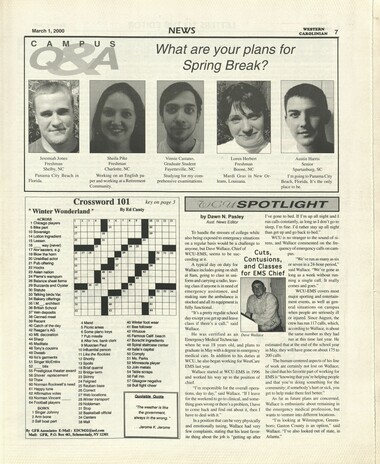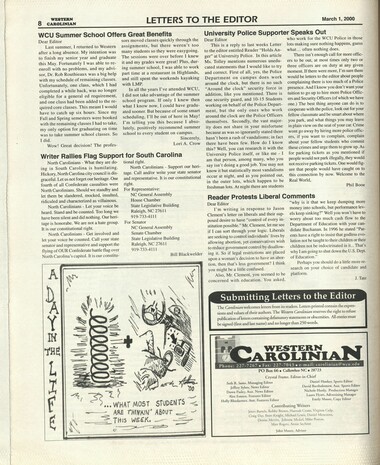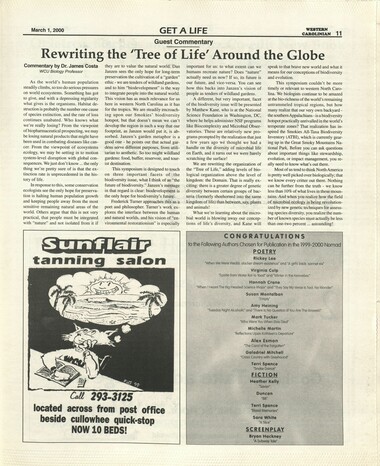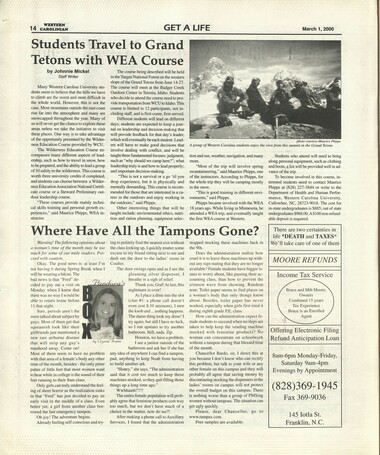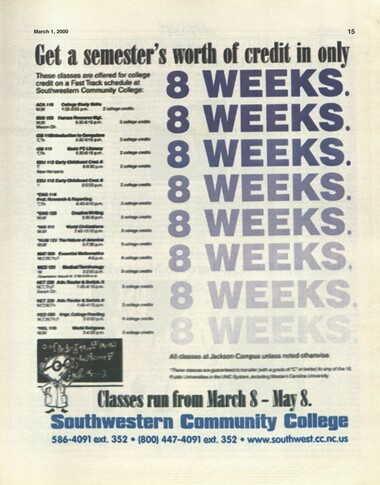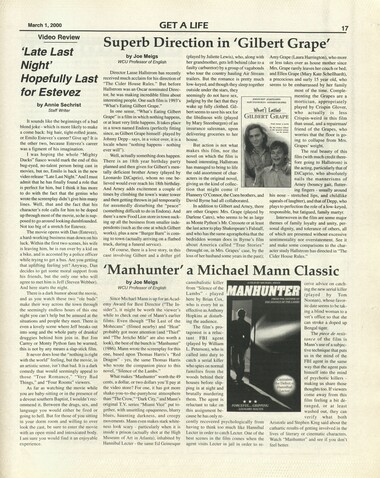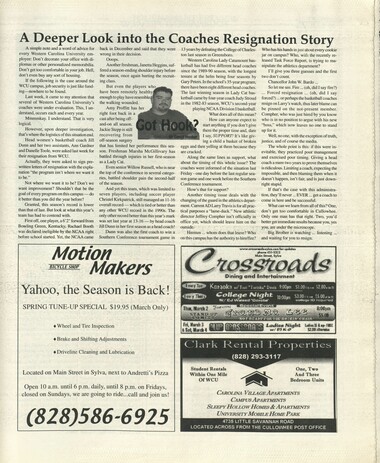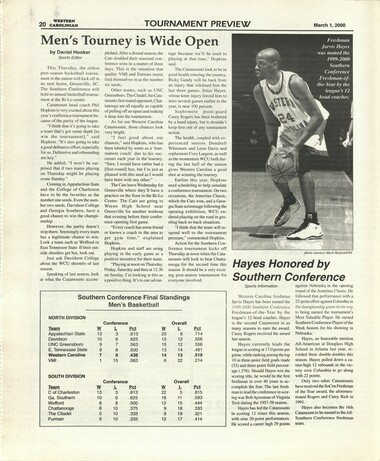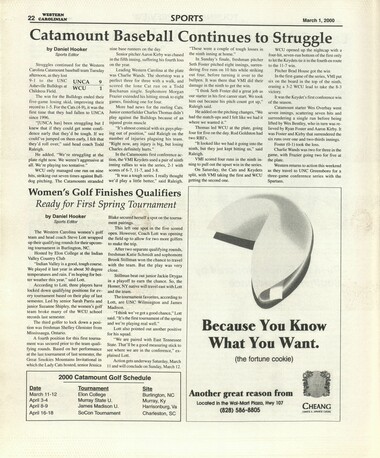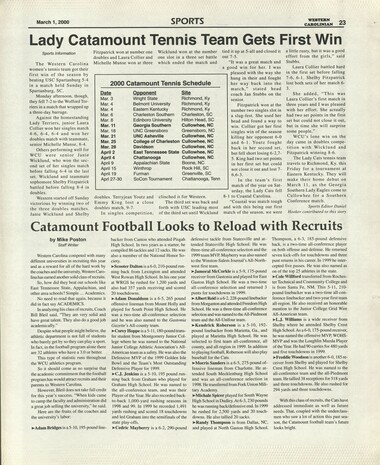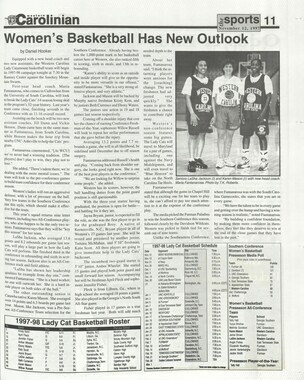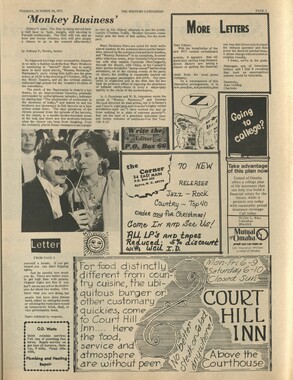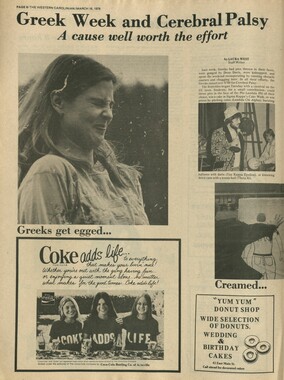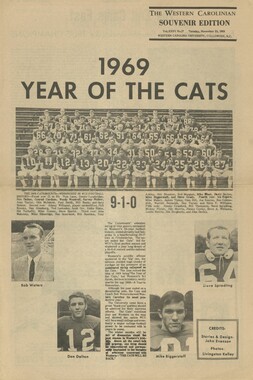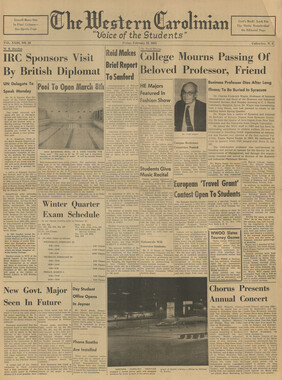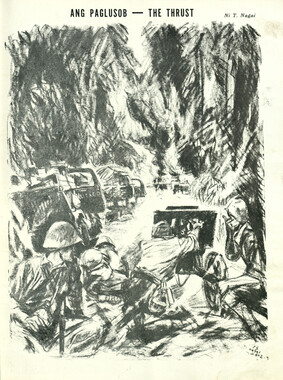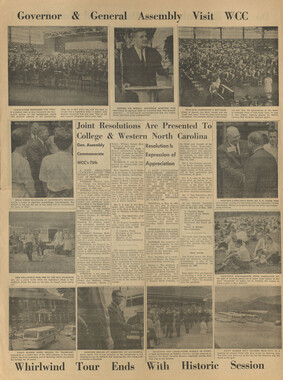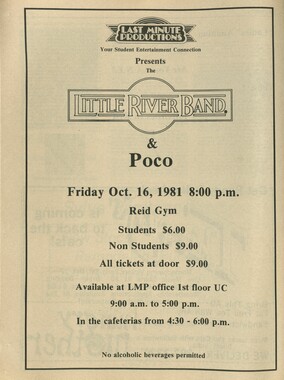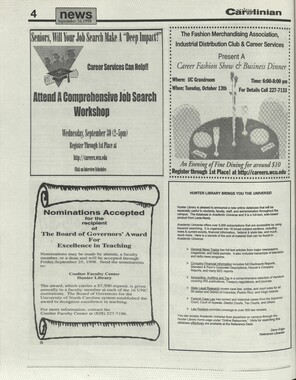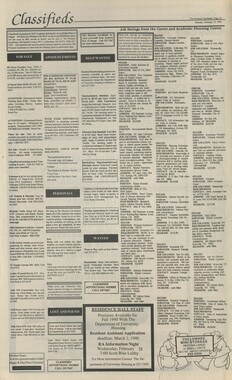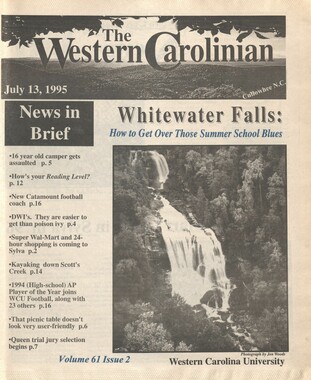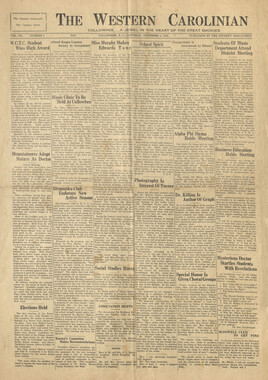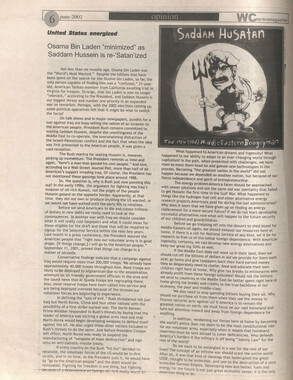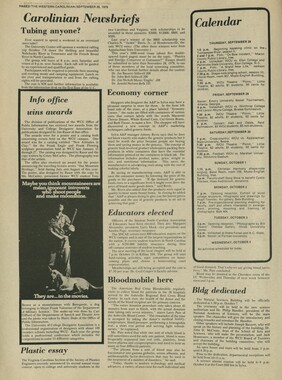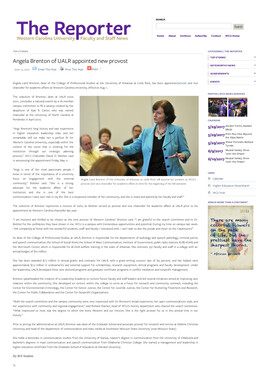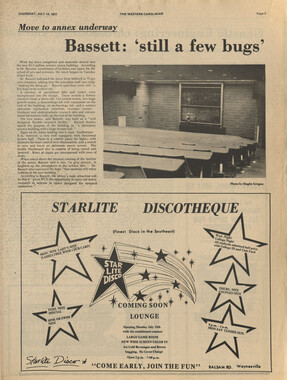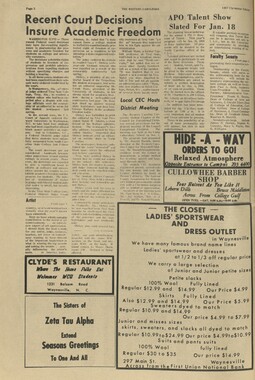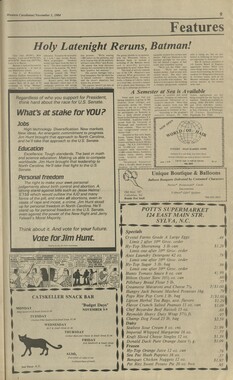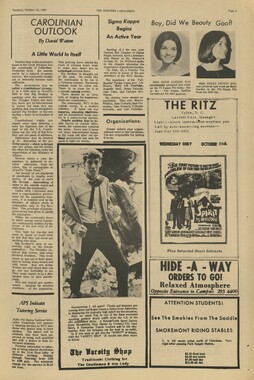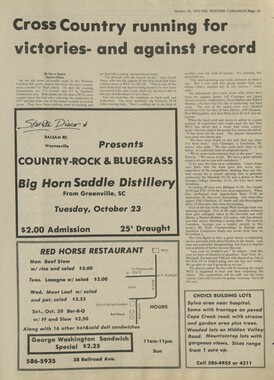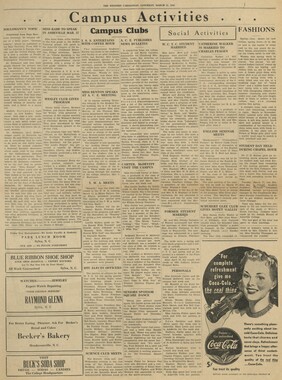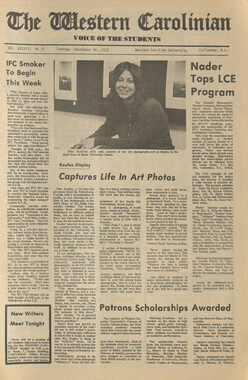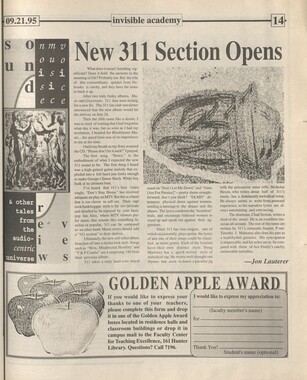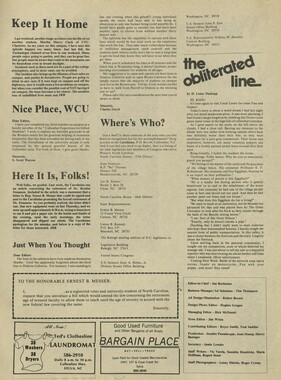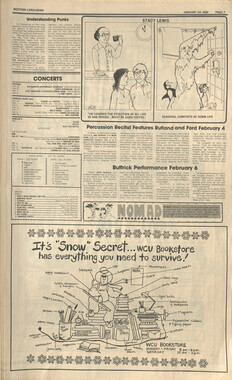Western Carolina University (20)
View all
- Canton Champion Fibre Company (2308)
- Cherokee Traditions (293)
- Civil War in Southern Appalachia (165)
- Craft Revival (1942)
- Great Smoky Mountains - A Park for America (2683)
- Highlights from Western Carolina University (430)
- Horace Kephart (941)
- Journeys Through Jackson (154)
- LGBTQIA+ Archive of Jackson County (15)
- Oral Histories of Western North Carolina (314)
- Picturing Appalachia (6679)
- Stories of Mountain Folk (413)
- Travel Western North Carolina (160)
- Western Carolina University Fine Art Museum Vitreograph Collection (129)
- Western Carolina University Herbarium (92)
- Western Carolina University: Making Memories (708)
- Western Carolina University Publications (2283)
- Western Carolina University Restricted Electronic Theses and Dissertations (146)
- Western North Carolina Regional Maps (71)
- World War II in Southern Appalachia (131)
University of North Carolina Asheville (6)
View all
- Allanstand Cottage Industries (62)
- Appalachian National Park Association (53)
- Bennett, Kelly, 1890-1974 (1295)
- Berry, Walter (76)
- Brasstown Carvers (40)
- Carver, George Washington, 1864?-1943 (26)
- Cathey, Joseph, 1803-1874 (1)
- Champion Fibre Company (233)
- Champion Paper and Fibre Company (297)
- Cherokee Indian Fair Association (16)
- Cherokee Language Program (22)
- Crowe, Amanda (40)
- Edmonston, Thomas Benton, 1842-1907 (7)
- Ensley, A. L. (Abraham Lincoln), 1865-1948 (275)
- Fromer, Irving Rhodes, 1913-1994 (70)
- George Butz (BFS 1907) (46)
- Goodrich, Frances Louisa (120)
- Grant, George Alexander, 1891-1964 (96)
- Heard, Marian Gladys (60)
- Kephart, Calvin, 1883-1969 (15)
- Kephart, Horace, 1862-1931 (313)
- Kephart, Laura, 1862-1954 (39)
- Laney, Gideon Thomas, 1889-1976 (439)
- Masa, George, 1881-1933 (61)
- McElhinney, William Julian, 1896-1953 (44)
- Niggli, Josephina, 1910-1983 (10)
- North Carolina Park Commission (105)
- Osborne, Kezia Stradley (9)
- Owens, Samuel Robert, 1918-1995 (11)
- Penland Weavers and Potters (36)
- Roberts, Vivienne (15)
- Roth, Albert, 1890-1974 (142)
- Schenck, Carl Alwin, 1868-1955 (1)
- Sherrill's Photography Studio (2565)
- Southern Highland Handicraft Guild (127)
- Southern Highlanders, Inc. (71)
- Stalcup, Jesse Bryson (46)
- Stearns, I. K. (213)
- Thompson, James Edward, 1880-1976 (226)
- United States. Indian Arts and Crafts Board (130)
- USFS (683)
- Vance, Zebulon Baird, 1830-1894 (1)
- Weaver, Zebulon, 1872-1948 (58)
- Western Carolina College (230)
- Western Carolina Teachers College (282)
- Western Carolina University (1794)
- Western Carolina University. Mountain Heritage Center (18)
- Whitman, Walt, 1819-1892 (10)
- Wilburn, Hiram Coleman, 1880-1967 (73)
- Williams, Isadora (3)
- Cain, Doreyl Ammons (0)
- Crittenden, Lorraine (0)
- Rhodes, Judy (0)
- Smith, Edward Clark (0)
- Appalachian Region, Southern (2393)
- Asheville (N.C.) (1886)
- Avery County (N.C.) (26)
- Blount County (Tenn.) (147)
- Buncombe County (N.C.) (1664)
- Cherokee County (N.C.) (283)
- Clay County (N.C.) (555)
- Graham County (N.C.) (233)
- Great Smoky Mountains National Park (N.C. and Tenn.) (478)
- Haywood County (N.C.) (3522)
- Henderson County (N.C.) (70)
- Jackson County (N.C.) (4692)
- Knox County (Tenn.) (21)
- Knoxville (Tenn.) (9)
- Lake Santeetlah (N.C.) (10)
- Macon County (N.C.) (420)
- Madison County (N.C.) (211)
- McDowell County (N.C.) (39)
- Mitchell County (N.C.) (132)
- Polk County (N.C.) (35)
- Qualla Boundary (981)
- Rutherford County (N.C.) (76)
- Swain County (N.C.) (2017)
- Transylvania County (N.C.) (247)
- Watauga County (N.C.) (12)
- Waynesville (N.C.) (68)
- Yancey County (N.C.) (72)
- Aerial Photographs (3)
- Aerial Views (60)
- Albums (books) (4)
- Articles (1)
- Artifacts (object Genre) (228)
- Biography (general Genre) (2)
- Cards (information Artifacts) (38)
- Clippings (information Artifacts) (191)
- Crafts (art Genres) (622)
- Depictions (visual Works) (21)
- Design Drawings (1)
- Drawings (visual Works) (184)
- Envelopes (73)
- Facsimiles (reproductions) (1)
- Fiction (general Genre) (4)
- Financial Records (12)
- Fliers (printed Matter) (67)
- Glass Plate Negatives (381)
- Guidebooks (2)
- Internegatives (10)
- Interviews (811)
- Land Surveys (102)
- Letters (correspondence) (1013)
- Manuscripts (documents) (619)
- Maps (documents) (159)
- Memorandums (25)
- Minutes (administrative Records) (59)
- Negatives (photographs) (5651)
- Newsletters (1285)
- Newspapers (2)
- Occupation Currency (1)
- Paintings (visual Works) (1)
- Pen And Ink Drawings (1)
- Periodicals (193)
- Personal Narratives (7)
- Photographs (12982)
- Plans (maps) (1)
- Poetry (5)
- Portraits (1655)
- Postcards (329)
- Programs (documents) (151)
- Publications (documents) (2237)
- Questionnaires (65)
- Scrapbooks (282)
- Sheet Music (1)
- Slides (photographs) (402)
- Sound Recordings (796)
- Specimens (92)
- Speeches (documents) (15)
- Tintypes (photographs) (8)
- Transcripts (322)
- Video Recordings (physical Artifacts) (23)
- Vitreographs (129)
- Text Messages (0)
- A.L. Ensley Collection (275)
- Appalachian Industrial School Records (7)
- Appalachian National Park Association Records (336)
- Axley-Meroney Collection (2)
- Bayard Wootten Photograph Collection (20)
- Bethel Rural Community Organization Collection (7)
- Blumer Collection (5)
- C.W. Slagle Collection (20)
- Canton Area Historical Museum (2110)
- Carlos C. Campbell Collection (198)
- Cataloochee History Project (65)
- Cherokee Studies Collection (4)
- Daisy Dame Photograph Album (5)
- Daniel Boone VI Collection (1)
- Doris Ulmann Photograph Collection (112)
- Elizabeth H. Lasley Collection (1)
- Elizabeth Woolworth Szold Fleharty Collection (4)
- Frank Fry Collection (95)
- George Masa Collection (173)
- Gideon Laney Collection (452)
- Hazel Scarborough Collection (2)
- Hiram C. Wilburn Papers (28)
- Historic Photographs Collection (236)
- Horace Kephart Collection (861)
- Humbard Collection (33)
- Hunter and Weaver Families Collection (1)
- I. D. Blumenthal Collection (4)
- Isadora Williams Collection (4)
- Jesse Bryson Stalcup Collection (47)
- Jim Thompson Collection (224)
- John B. Battle Collection (7)
- John C. Campbell Folk School Records (80)
- John Parris Collection (6)
- Judaculla Rock project (2)
- Kelly Bennett Collection (1314)
- Love Family Papers (11)
- Major Wiley Parris Civil War Letters (3)
- Map Collection (12)
- McFee-Misemer Civil War Letters (34)
- Mountain Heritage Center Collection (4)
- Norburn - Robertson - Thomson Families Collection (44)
- Pauline Hood Collection (7)
- Pre-Guild Collection (2)
- Qualla Arts and Crafts Mutual Collection (12)
- R.A. Romanes Collection (681)
- Rosser H. Taylor Collection (1)
- Samuel Robert Owens Collection (94)
- Sara Madison Collection (144)
- Sherrill Studio Photo Collection (2558)
- Smoky Mountains Hiking Club Collection (616)
- Stories of Mountain Folk - Radio Programs (374)
- The Reporter, Western Carolina University (510)
- Venoy and Elizabeth Reed Collection (16)
- WCU Gender and Sexuality Oral History Project (32)
- WCU Mountain Heritage Center Oral Histories (25)
- WCU Oral History Collection - Mountain People, Mountain Lives (71)
- WCU Students Newspapers Collection (1744)
- Western North Carolina Tomorrow Black Oral History Project (69)
- William Williams Stringfield Collection (2)
- Zebulon Weaver Collection (109)
- African Americans (388)
- Appalachian Trail (32)
- Artisans (521)
- Cherokee art (84)
- Cherokee artists -- North Carolina (10)
- Cherokee language (21)
- Cherokee pottery (101)
- Cherokee women (208)
- Church buildings (166)
- Civilian Conservation Corps (U.S.) (110)
- College student newspapers and periodicals (1830)
- Dams (94)
- Dance (1023)
- Education (222)
- Floods (60)
- Folk music (1015)
- Forced removal, 1813-1903 (2)
- Forest conservation (220)
- Forests and forestry (917)
- Gender nonconformity (4)
- Great Smoky Mountains National Park (N.C. and Tenn.) (154)
- Hunting (38)
- Landscape photography (10)
- Logging (103)
- Maps (84)
- Mines and mineral resources (8)
- North Carolina -- Maps (18)
- Paper industry (38)
- Postcards (255)
- Pottery (135)
- Railroad trains (69)
- Rural electrification -- North Carolina, Western (3)
- School integration -- Southern States (2)
- Segregation -- North Carolina, Western (5)
- Slavery (5)
- Sports (452)
- Storytelling (245)
- Waterfalls -- Great Smoky Mountains (N.C. and Tenn.) (66)
- Weaving -- Appalachian Region, Southern (280)
- Wood-carving -- Appalachian Region, Southern (328)
- World War, 1939-1945 (173)
Western Carolinian Volume 64 (65) Number 23
Item
Item’s are ‘child’ level descriptions to ‘parent’ objects, (e.g. one page of a whole book).
-
-
WESTERN ID CAROLINIAN GET A LIFE March 1,2000 Book Review Lives Lived and Debts Paid in 'The Ghost Stream' by Virginia Culp Staff Writer Even for the most hardened skeptics, The Ghost Stream, by Randy L. Pitts, is a little creepy. Not the nail-biting-scream- when-the-floor-creaks kind of creepy, but creepy all the same. Maybe it has something to do with the faces that keep materializing out of nowhere, appearing like bas-relief on water and in air, or maybe it's the way the narrative jumps around, confusing the reader's sense of literary direction and emphasizing the horror of the events. Over the course of The Ghost Stream, no less than four narrative voices tell the tale - or rather, tales - of Jack Wolf, Tracy Riata, and Carrie Powers. While the women exist only in the present, Jack jumps unnervingly back and forth between the days of the Wild West and the modern world. Pay attention to the names in this book: they come in very handy for keeping people and places straight. My overall impression of this book was that Pitts had written four separate novels and then randomly stuck chapters together to form a single novel. Chapter one focuses on Jack (third person); chapter two deals with Tracy (third person); chapter three is back to Jack, but now it's in first person! And it only gets more confusing from there. Even in the end, when Pitts attempts to gather the disparate threads and weave them into coherency, there is a sense of uncertainty and apprehension that is far more nerve-racking than one would think. The fact that the reader is never quite sure what is hallucination and what is reality, the lightning shifts through time and space, and most of all, the ubiquitous fog that precedes brushes with the supernatural, all work together to keep the reader off-balance and nervous. As far as I can make out, The Ghost Stream is about life, death, karma, connections among people, unfinished business, and (of course) ghosts. Specifically, Native American ghosts out for revenge on the descendants of the white men who tormented them. Jack has a run-in with these phantoms early on: "Three men painted with gray and black stripes over their bodies were walking on the other shore. No, there is no other shore, he thought, There's only a solid wall of rock. They were walking on top of the water. The men all gripped large knives in their left hands, and they were naked ... Each held his right palm pressed against the right side of his stomach. Something dark and luminous was moving just behind their fingers, as if it was trying to slither out." Later on, both Jack and Tracy are treated to encounters with a supernatural killer who literally slashes his victims to ribbons. Apparently, his modus operandi is to take unsuspecting vacationers on a Whitewater trip on a Colorado river, beach the raft in a lonely spot, and then separate the group by asking one or more members to step into the trees. After that, all hell breaks loose. "A naked man swept towards them. It photo by Lisa Dale Marler Author Randy Pitts at work. seemed like he was almost flying ... He had what looked like flames blazing behind him and smoke rising off his body. Tracy blinked, then jabbed at him ... he knocked it away and cut her across the throat... She saw the knife flashing again, two enraged black eyes glaring at her surrounded by long, matted, smoking hair. He's on fire, she thought, a scream forming in her throat." There is also a section dealing with the religious philosophy of a group of South Korean Buddhist monks. Here, the leader shares his views of life, death, and karma with Jack, explaining that the ghosts he has been seeing are elements from his past, not just in this life, but in previous lives as well. Pitts has obviously done his research here, and his descriptions of the monastery are thorough at the least. However, while the idea of reincarnation clears up one confusion - why the chapters about Jack keep skipping back and forth between times - it only adds to the general swirling sensation, signifying information overload, that accompanies perusal of The Ghost Stream. While the ending is somewhat predictable and the idea of haunted mountains a tad overused, this is an interesting enough book if one is looking for an easy read with regularly spaced episodes of violence and gore. Music Review Thinking of Days that are No More with The Cure by Hannah Crane Staff Writer This must have been the week for visiting the past. I understand Warren Zevon put out an album after a hiatus, and now, representing a group that saw most of its popularity in the 80s, we have a new album from The Cure, entitled Bloodflowers. Although I do not profess to be the biggest expert on music from the 80s, many of the songs on this album had a feel of the decade of poofy hair, Reaganomics, and "I want my MTV." My favorite song, which happens to also be the first song on the CD, is "Out of this World." Musically, this song has a hypnotic rhythm and a dream-like quality. It suits the idea of the song, which is that this experience is something that they will look back on and realize that it was a time when they were really alive. The chorus says "... I know we have to go/ I realize we only get to stay so long/ always have to go back to real lives where we belong." It is a really nice expression of the stolen seasons in life when we have those transcendental moments, but know that we cannot keep them in a jar. The more I listen to this song, the more I think I like it. It does not really mesh with the other songs on this album, however. The second bright spot on the album comes in the song "There is no if ..." If you have read any of my previous CD reviews, you will notice that I look for poetic qualities within the songs, to see if they work on many levels. This song is a perfect example of lyrics that could stand on their own as poetry. In the first stanza, the speaker says, "Remember the first time I told you I love you/ it was raining hard and you never heard/ You sneezed! And I had to say it over." Ah, love in its finest moment. The two lovers go on to promise that they will be together forever, even death will not part them. Then, after a brief bridge we get the flip- side of the affair: "Remember the last time I told you I love you/ it was warm and safe in our perfect world/ you yawned and I had to say it over." So, it is not all peaches and cream as the lovers realize that they should not promise forever and always; they don't know what will happen down the road, there are no "ifs" in life. Other songs have their moments; there are hints and whispers of cleverness, but, alas, nothing complete. I found many of the lyrics to be manifestations of teen angst, which sometimes, I'll admit, I can be in the mood for, but traditionally, that kind of music just makes me feel frustrated. Also, in many of the songs I found myself getting down in the dumps just listening to the melody. Not the CD I would recommend if you are already feeling overwhelmed by school and life itself; not particularly uplifting. However, I have found that as I have listened to the songs closely, they are growing on me, so maybe this is one of those albums. On a final note, the group scored points with me when I started leafing through the lyric pages ... the last page contained a quote from Tennyson's "The Princess": "I know not what they mean/ tears from the depth of some divine despair/ rise in the heart, and gather to the eyes/ in looking on the happy autumn fields/ and thinking of the days that are no more." It suits the feel of the album - very cool.
Object
Object’s are ‘parent’ level descriptions to ‘children’ items, (e.g. a book with pages).
-
The Western Carolinian is Western Carolina University's student-run newspaper. The paper was published as the Cullowhee Yodel from 1924 to 1931 before changing its name to The Western Carolinian in 1933.
-
